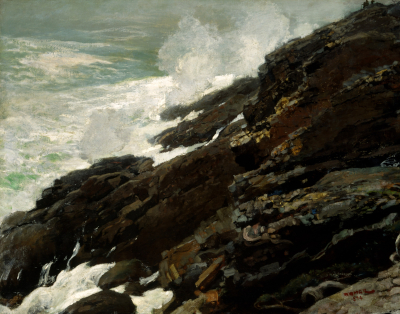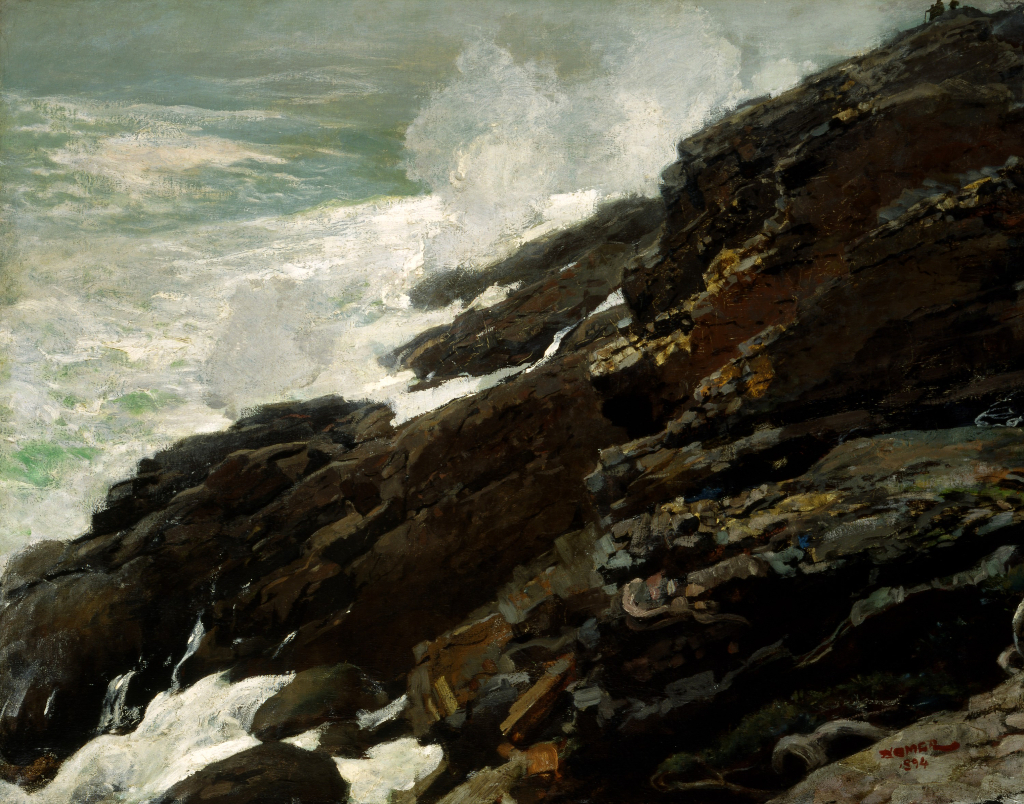High Cliff, Coast of Maine is a Winslow Homer painting from 1894. It currently resides within the Smithsonian American Art Museum, USA. It was one of many seascape artworks produced by this famous American painter.
The composition is relatively simple, with a mound of craggy rock sweeping down from the right hand side towards the waves below. The sea crashes against it in the opposite direction, throwing plumes of splash water into the air. Two main tones contrast within this piece, from the light colours of the sea, to the dark rock which lines the shore. Followers of Homer will recognise this tone of colour as this type of rock appears in several of his artworks from the latter part of his career. Those that look closely will be able to make out touches of gold or yellow which is mixed within a predominantly very dark grey. Those with good eyesight may also spot a few figures in the very far distance, placed in the top right corner of the painting - this is the only inclusion of humanity within this piece and serves more as a means to perspective that anything else.
The artist set up a studio in Maine in order to access the sea more easily and for a number of years this genre would become his main focus. Homer found so much life going on here, in and around the coast. He would leave out humanity on some occasions, whilst at other times they would become the main focal point. He also would be best known for his seascapes by the end of his career, and remains that way today. Most American art fans will be aware of classic artworks such as Breezing Up (A Fair Wind), The Fog Warning and The Life Line. Research into the artist's oeuvre has revealed that High Cliff, Coast of Maine was completed at Prout’s Neck, which remained one of the artist's favourite spots to work throughout his career. Experts in his work have suggested that the composition was deliberately tightened in order to increase the atmosphere and tension as the waves crashed against the cliff, as Homer also produced other seascapes in which an entirely different mood was delivered.
Homer helped to introduce the US region of Maine to the world through his impressive artworks and High Cliff, Coast of Maine is another good example of that. He was rare as an American artist from the 19th century who wanted to focus pretty much exclusively on his own nation, and not get caught up in trying to follow in the footsteps of the great European masters. This approach served him well and today he is regarded as an important contributor towards bringing a uniqueness to art from this region and allowing it to become a little more independent. His inclusion within the Smithsonian American Art Museum is there entirely apt and this excellent art museum actually holds a good number of different artworks from his career, covering several different mediums from across the different periods of his lifetime.





